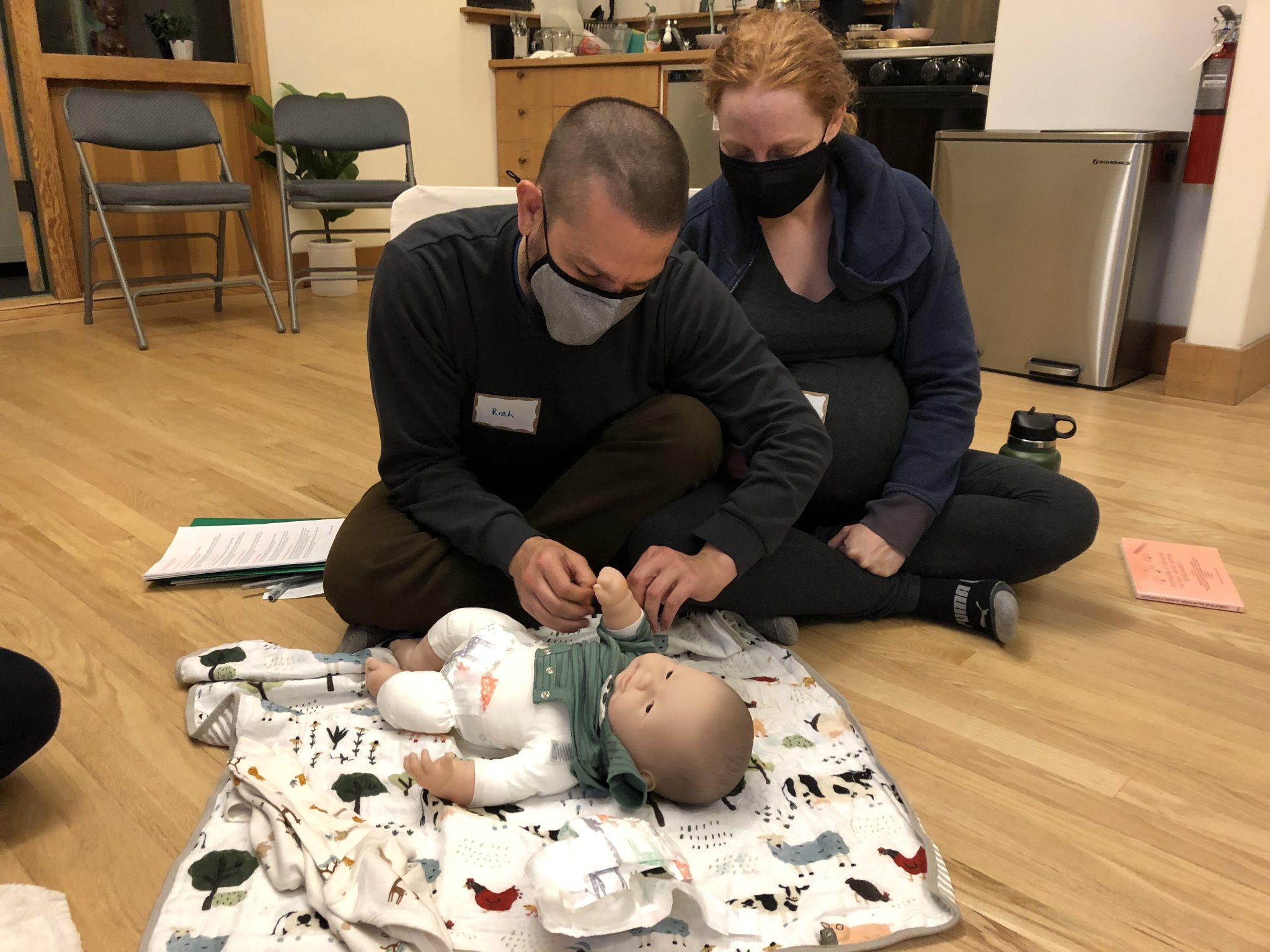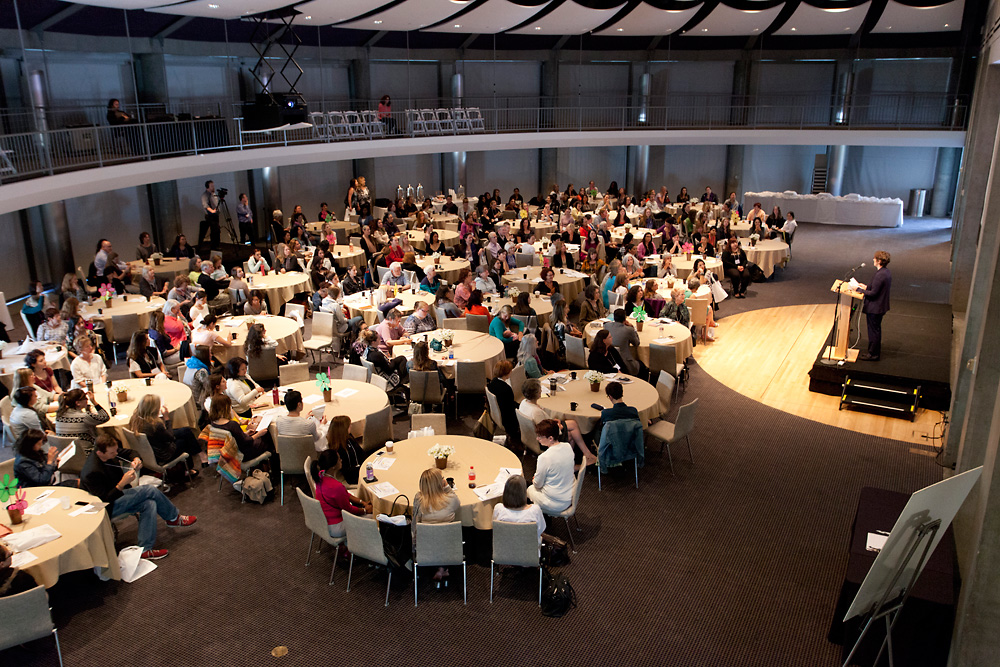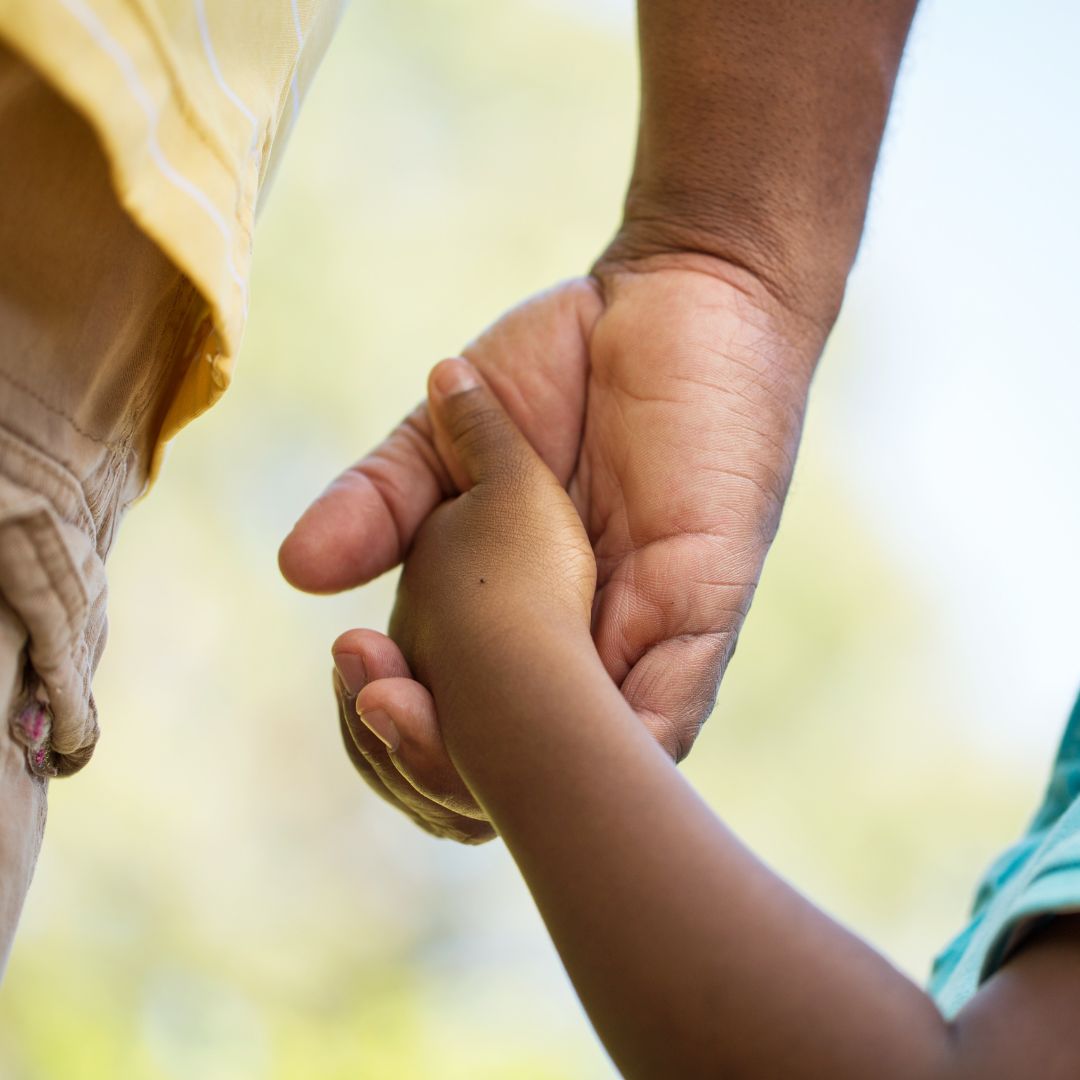Dear Magda,
It is becoming more and more difficult to put Alison, my seven-month-old, to sleep. I have always nursed her to sleep, but now she wakes up crying as soon as I put her down, or shortly thereafter. I have tried putting her down later and later in the evening, thinking she was not sleepy, but this did not help. Now, neither Alison nor I get enough sleep. Help!
Tired Parent
Dear Parent,
I’ll try. But do not expect a magic formula; sometimes we cannot isolate any one problem area from the rest of the everyday life of your baby.
I know that the easiest way to put your baby to sleep is to nurse her into sleep. I have observed, however, that as an infant becomes more aware of herself and of her environment, it is better to put her down while she is still somewhat awake. It is possible that waking up in a crib with no memory of having been put there can be disorienting and scary. Babies younger than Alison may wake up confused because of the sudden change in their sensitive vestibular organization, (i.e. going from a more upright position to lying flat in the crib).
Rather than putting Alison down later and later, I suggest that you sensitively observe the very first signs of tiredness. That is the time a child is ready for sleep. As time goes by, increased tiredness builds resistance —and once the second wind hits, going to sleep becomes an ordeal for both your baby and you. An overtired child sleeps restlessly, wakes up more often during the night and gets up grouchy, way too early in the morning. Stress and overstimulation can also cause exhaustion, irritability and resistance to sleep.
Many parents I have advised have learned with surprise and delight that contrary to their fears, putting babies to bed very early in the evening did not make them wake up earlier in the morning. Indeed, their babies often woke up much later in the morning, adding hours of sleep.
Your goal is to develop good sleeping habits. The easiest way to develop good habits in general is to have a predictable daily life. Young babies thrive on routine. Ideally, daily events of eating, sleeping, bathing, outdoor play. etc., happen around the same time and in the same sequence each day. As the baby is learning to anticipate the next event, many conflicts are eliminated. A mutual adaptation of the biological rhythm of your baby and your family schedule develops. It also enables you, the parent, to plan ahead for those blocks of time when your baby is usually napping or playing peacefully.
But be prepared that there will be times when a child becomes reluctant to fall asleep, e.g. when she comes down with a sickness, shortly before a spurt of new developmental milestones, or during certain vulnerable times of emotional growth, such as separation anxiety. Your 7-month-old Alison is at a sensitive period for separation anxiety.
Both the amount and the pattern of sleep change from child to child and of course change as she grows. Newborn and very young babies alternate periods of sleep with periods of wakefulness six to ten times within 24 hours, with an average of 18 to 21 hours of steep; two- to three-year-olds average 12-14 hours of sleep.
Everything that happens to your baby during the day can influence her sleep pattern. Does she spend plenty of time playing outdoors? Building a room-size outdoor playpen is an excellent investment. Napping outdoors is a good habit.
I want to talk a little about how to put a baby to bed. As bedtime approaches, create an atmosphere that becomes progressively slower paced and more quiet. Do you happen to know the lovely book by Margaret Wise Brown, Good Night Moon, in which page by page the room darkens, gradually evoking a sleepy mood? This is the feeling I suggest you work toward.
Repeating a simple pre-bedtime ritual helps your baby to get ready gradually. For example, making a habit of commenting while putting away toys can be helpful: “The ball goes into this basket here in the corner; dolly sits on the top shelf; the toys will stay here until morning when you can play with them again.” Such comments build a bridge between ‘tonight’ and ‘tomorrow,’ and provide a sense of continuity and security. Then you may continue, “I am going to pull the curtains now, then I will turn off the big light and put on the night light, then I will go into the other room.” As Alison grows older, she may take over your role and have such monologues herself.
Some infants have a special bed companion, a ‘lovey’ such as a Teddy bear or blanket, also referred to as a transitional object. Putting Alison and her lovey to bed, you may talk to the bear, “Have a peaceful rest. I will cover both Alison and you so that the two of you will feel comfortable and cozy. Are you ready for your lullaby?” (You may want to sing or wind up a music box — music is a soothing way to end a day.)
Finally, caress your baby gently and say, “Good night. I’ll see you in the morning.”
As you can see, l am giving you ideas of how you can create an atmosphere conducive to rest. But remember nobody can make another person fall asleep, (short of giving sleeping pills). How to relax and let sleep come is a skill Alison, like everybody else, must learn all by herself. Children also wake up several times during the night and learn how to case themselves back into sleep, (unless they have a need, or get scared.)
Your overall attitude can make a difference. Do not feel sorry for “poor baby” who must go to bed — rather remember how good it feels to rest when you are tired, and how nice it feels to wake up refreshed.
Wishing you peaceful nights and joyful days in 1984.
Magda
Editor’s note: We have followed these guidelines with Nathan from his earliest days, and he now knows when he needs sleep, and that it feels good to sleep when he is tired. The other day, he came in the kitchen after his rest, hugged me and said, “Mommy, I had a wonderful nap.” ■
EDUCARING® Volume V, Number 1, Winter 1984





